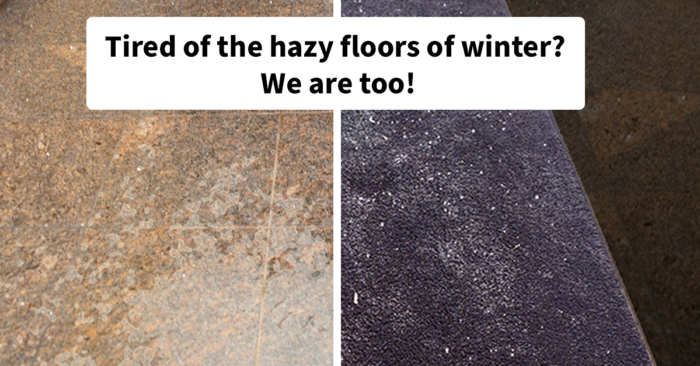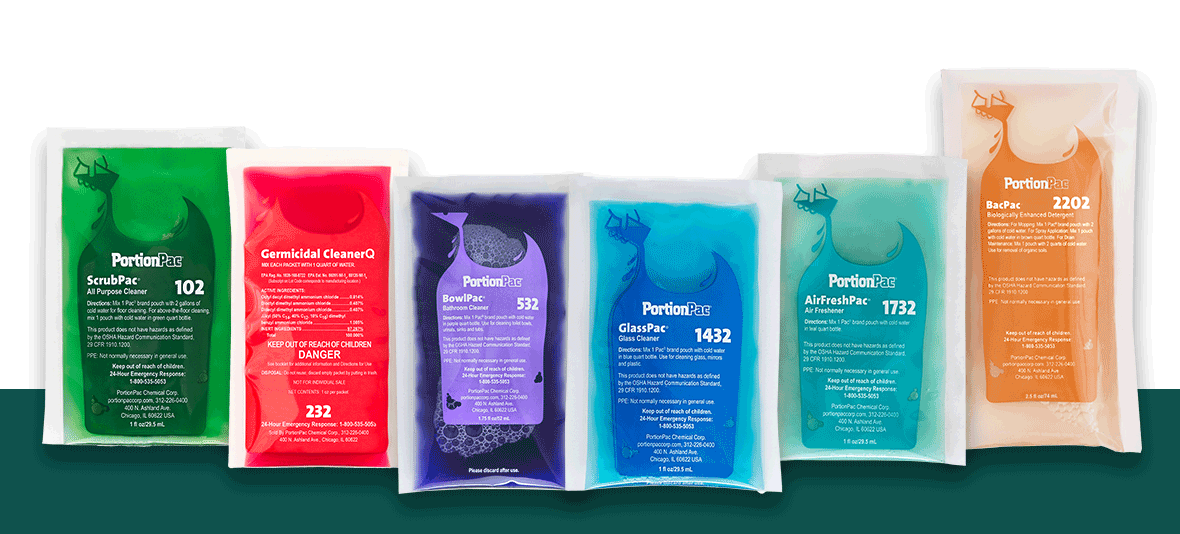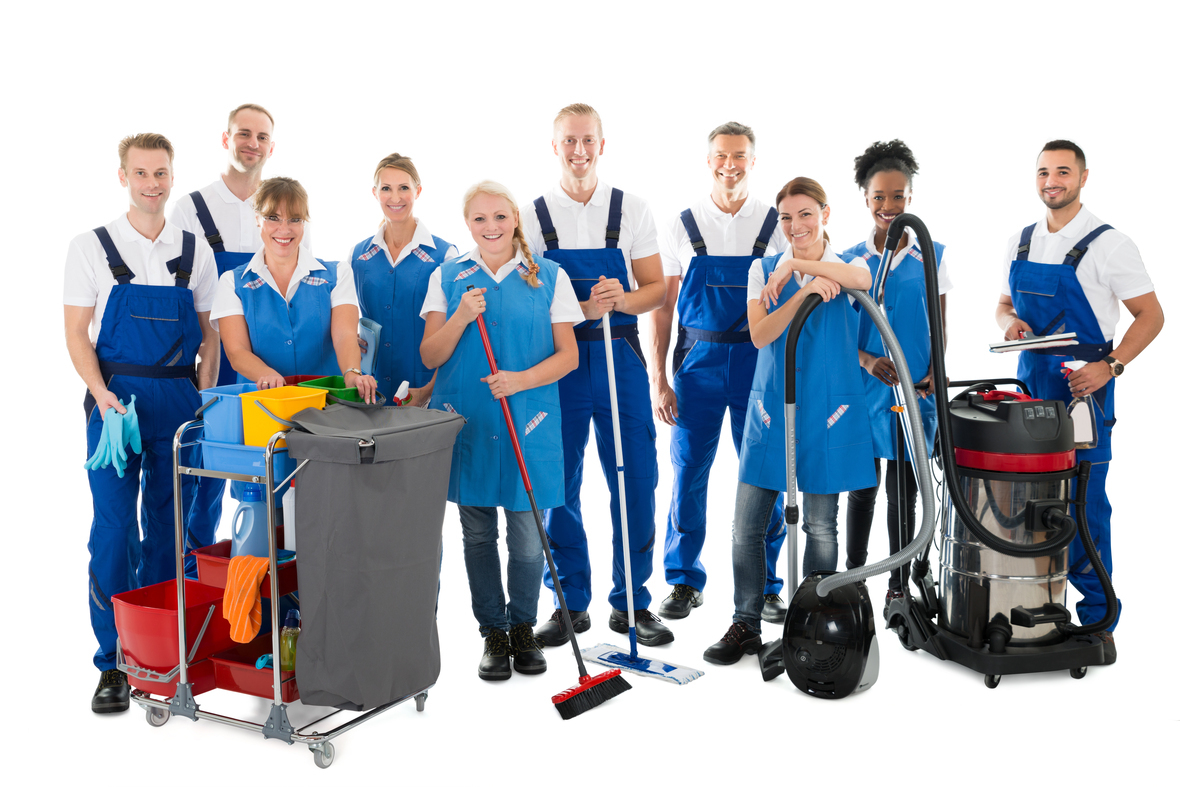Tired of the hazy floors of winter? We are too!
February 23, 2021


The snow is done falling – we have plowed, shoveled and blown it off walkways and driveways so cars and people can keep moving. And to prevent surfaces from becoming slippery, we have spread ice melt. Inevitably, some of that ice melt comes inside onto the walk off mat or bare floor at the entrance of our buildings. Soon the dreaded white haze takes over, and if left unchecked, entrance mats become saturated and white footprints grow across lobby floors.
Our first instinct is to mop or auto-scrub the floor. The question is, how, with what and why does that matter?
Consider these two scenarios:
A small area to be cleaned or you don’t have an autoscrubber
It is best to use 2 buckets or a dual bucket system. One bucket with neutralizer solution and the other with clean water. Rinse the dirty mop in clean water before placing it back into solution.
Large area to be cleaned with visible ice melt debris
Use an autoscrubber, if you have one. Fill the reservoir with cold water only. Run the autoscrubber over the area to rinse and pick-up snow melt debris. Then, rinse and refill the autoscrubber with neutralizer solution and scrub the floor again.
Why is this process so important?
The answer is related to the surface pH of our floors. The pH scale ranges from 0 to 14. 7 is neutral, 0 to 6 is acidic and 8-14 is considered alkaline. To maximize the life of our floors the surface needs to be neutral. If the surface is too far on either extreme, the finish will break down and eventually the underlying floor will become permanently damaged. Snow removal products are alkaline. To get floors to neutral, where they should be, there are products called neutralizers. These products are acidic. Properly applying an acidic solution in sufficient quantity to an alkaline floor will bring it back to neutral. We know how much is enough when the floor dries without a white haze.
Your Solution to Ice Melt Residue and Floor Protection
NeutraPac® is the ultimate solution for combating ice melt residue and protecting your floors. Its powerful pH-neutralizing formula quickly restores balance to alkaline surfaces, eliminating white haze and preventing long-term damage to finishes. Designed for easy application, NeutraPac® works seamlessly with mop systems or autoscrubbers, making it perfect for any cleaning operation. Don’t let winter mess up your floors—trust NeutraPac® to keep them clean, safe, and looking their best all season long.
Contact us for more information




